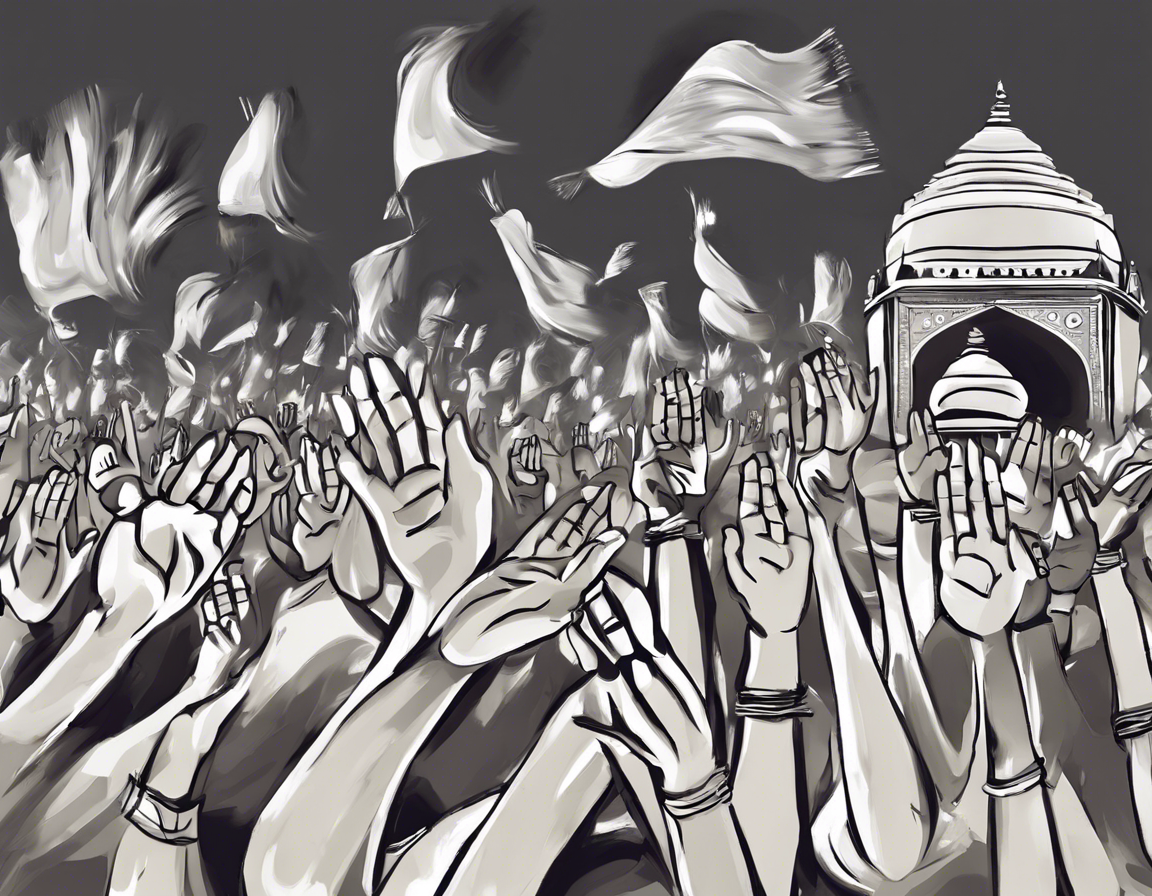
Bharat Chhodo Andolan: India’s Fight for Independence
The Bharat Chhodo Andolan, also known as the Quit India Movement, was a crucial milestone in India’s struggle for independence from British colonial rule. This movement, initiated by the Indian National Congress under the leadership of Mahatma Gandhi, aimed to demand an immediate end to British rule in India. The movement marked a decisive shift towards mass civil disobedience and non-cooperation as a means to achieve independence.
Origin and Historical Context
The Quit India Movement was launched on August 8, 1942, in response to the failure of the Cripps Mission, which did not offer concrete plans for Indian independence. The Indian National Congress, under Gandhi’s leadership, proposed the immediate withdrawal of the British from India. This movement emphasized the principle of non-violence and aimed to unify the Indian populace in the struggle against colonial rule.
Objectives of the Movement
The primary objective of the Quit India Movement was to obtain complete independence for India. It called for the British to “Quit India” and transfer power to the Indian people. The movement sought to mobilize Indians across all strata of society, emphasizing unity and non-violent resistance as the means to achieve independence.
Key Leaders
-
Mahatma Gandhi: The spearhead of the Quit India Movement, Gandhi provided the moral and ethical foundation for the movement through his principle of non-violence.
-
Jawaharlal Nehru: A prominent leader of the Congress party, Nehru played a crucial role in organizing the movement and articulating its goals.
-
Sarojini Naidu: Known as the “Nightingale of India,” Naidu was a key figure in mobilizing women and encouraging their active participation in the movement.
Key Events and Strategies
-
Gandhi’s Call for “Do or Die”: In his iconic speech on August 8, 1942, Gandhi called for Indians to “Do or Die” in the pursuit of independence, galvanizing mass support for the movement.
-
Civil Disobedience and Non-Cooperation: The movement saw widespread civil disobedience, strikes, and protests across India, aimed at disrupting British administration and undermining colonial authority.
-
Repression and Imprisonment: The British responded to the movement with severe repression, arresting thousands of Indian leaders and activists. Despite facing brutal suppression, the spirit of resistance remained strong among the Indian populace.
Impact and Legacy
The Quit India Movement had a profound impact on the Indian independence struggle and the course of history. It demonstrated the power of mass mobilization and non-violent resistance in challenging colonial rule. The movement also marked a turning point in India’s struggle for independence, setting the stage for the eventual withdrawal of the British in 1947.
Frequently Asked Questions (FAQs)
1. What were the main reasons behind the launch of the Quit India Movement?
The failure of the Cripps Mission to offer concrete plans for Indian independence and the discontent with British colonial rule were the primary reasons behind the launch of the Quit India Movement.
2. How did Mahatma Gandhi contribute to the Quit India Movement?
Mahatma Gandhi provided moral leadership and advocated for non-violent resistance as the guiding principle of the Quit India Movement.
3. What role did women play in the Quit India Movement?
Women, led by figures like Sarojini Naidu, actively participated in the movement, organizing protests, and supporting the cause of independence.
4. How did the British respond to the Quit India Movement?
The British responded with repression, arresting leaders and activists, imposing censorship, and resorting to violent measures to quell the movement.
5. What was the significance of the Quit India Movement in India’s struggle for independence?
The Quit India Movement symbolized a mass uprising against colonial rule, highlighting the Indian people’s determination to achieve independence through non-violent resistance and civil disobedience.
In conclusion, the Quit India Movement stands as a testament to the indomitable spirit of the Indian people in their quest for freedom and self-determination. The movement’s legacy continues to inspire generations, reminding us of the power of unity, non-violence, and unwavering commitment to the ideals of justice and independence.

